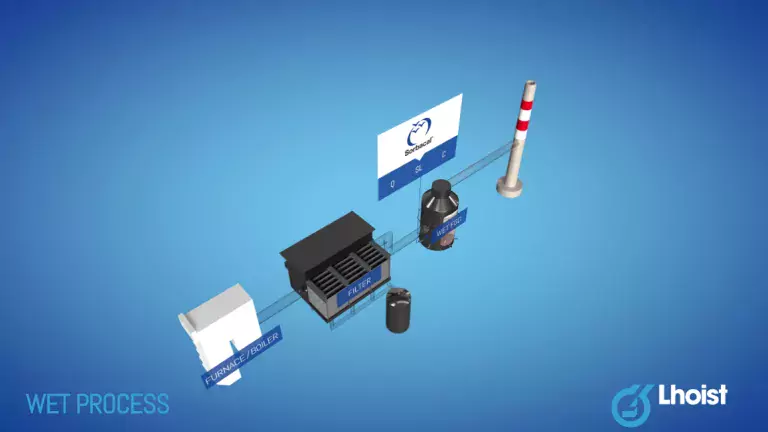Wet-process
What is wet scrubber process?
In wet flue gas treatment processes (wet scrubbers) designed for acid gas removal, the flue gas is cooled down via water evaporation below acid dew point (50 – 70 °C). Flue gas then passes through a scrubbing liquid. This can be water or an alkaline solution. The acidic gas components are dissolved in the scrubbing liquid and neutralized through a reaction with the alkaline sorbent. Depending on their water solubility, reaction products either remain dissolved in the scrubber liquid (mainly calcium chlorides) or they precipitate as solids (calcium sulphite CaSO3 and calcium sulphate CaSO4).
Benefits
Wet scrubbers are very effective for acid gas removal. They offer very high (> 99%) removal rates for HCl, HF and SO2, with the lowest possible sorbent consumption. They also require a high capital investment, as well as effluent treatment before final discharge. The ability to use economically-favourable limestone (CaCO3) means this process widely used, especially for larger units where constant quality and security of supply are critical.
With its extensive network of plants located on high-purity limestone deposits and its expertise in supply chain management, Lhoist is the ideal partner for this type of FGT process. Because wet scrubbers do not remove SO3 efficiently, combined processes with DSI for SO3 reduction may be required.
Lhoist product range dedicated to Wet process
We provide Sorbacal® C, limestone (CaCO3) sorbents in a variety of particle size distributions tailored to your wet scrubbing process equipment. The Sorbacal® C sorbents are of high purity and high whiteness, thus maximizing the value of the gypsum by-product.
